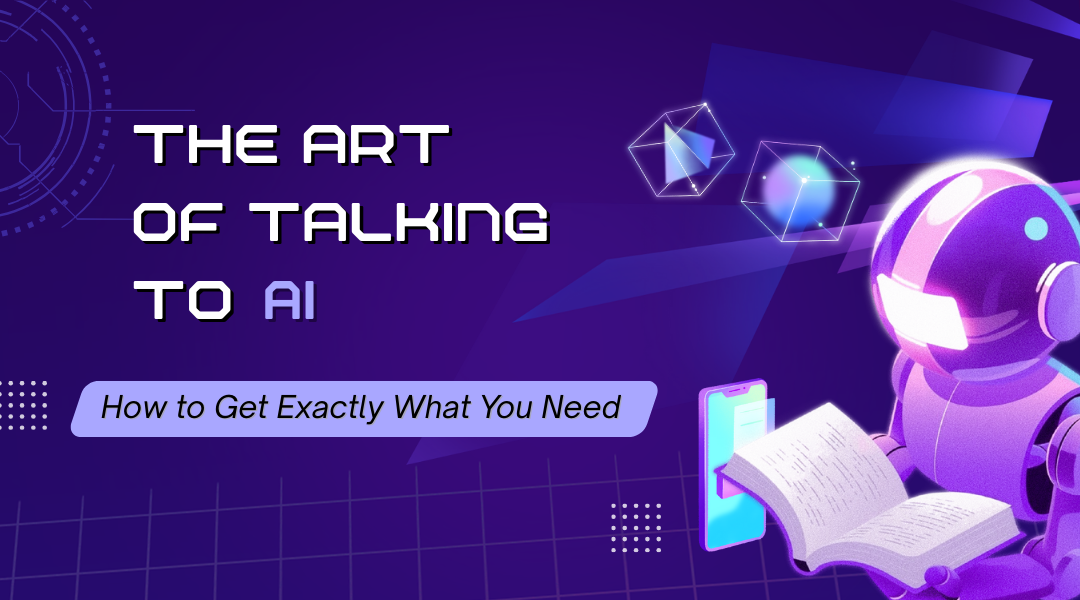We’ve all been there—you ask ChatGPT a question, and the response feels… off. Maybe it’s too vague, misses the point, or just doesn’t sound like you. The secret? It’s not about the AI’s limitations—it’s about how you ask.
Think of ChatGPT like a brilliant but literal-minded assistant. If you say “Write something about health,” you might get a textbook definition. But if you say “Explain intermittent fasting to a busy mom in three simple bullet points,” suddenly, the AI snaps into focus.
Three Rules for Getting Better Answers
1. Set the Scene (Context is King)
- Weak ask: “Tell me about social media marketing.”
- Strong ask: *”I run a small bakery. Write a 4-week Instagram plan to promote our new gluten-free cupcakes, with post ideas and hashtags.”*
Why it works: The more details you give, the less guessing the AI has to do.
2. Give It a Role (Who Should It Pretend to Be?)
Try starting prompts with:
- “You’re a stand-up comedian explaining tax deductions…”
- “Pretend you’re a grandma teaching me to knit…”
- “As a frustrated high school student, rewrite this Shakespeare scene in Gen Z slang…”
Real-world example:
“Act as a Michelin-star chef critiquing my homemade lasagna recipe. Be brutally honest.”
3. Nail the Details (Format, Length, Style)
Instead of: “Write a product description”
Try: *”Describe this bamboo toothbrush in 50 words or less. Sound eco-friendly but not preachy. Highlight: biodegradable handle, charcoal bristles, plastic-free packaging.”*
Unexpected Ways to Use ChatGPT
For Creatives
- “Generate 10 absurd premises for a children’s book (e.g., ‘The detective who only solves cookie thefts’).”
- “Suggest color palettes for a beach café rebrand—think sunset hues but not tropical cliché.”
For Professionals
- “Draft three polite but firm email responses to a client who keeps missing deadlines.”
- *”Summarize this 2,000-word report into three bullet points my CEO will actually read.”*
For Everyday Life
- “Plan a ‘mystery date night’ where I give my partner 5 cryptic clues about where we’re going.”
- “Write a funny apology note to my neighbor for my dog stealing their garden gnome.”
When AI Misses the Mark
If the response feels generic:
- Add constraints: “Give me five options, each under 10 words.”
- Demand examples: “Don’t just tell me networking tips—describe a specific icebreaker conversation at a tech conference.”
- Correct it: “That’s too formal. Rewrite it like you’re explaining it to a tired college student at 2 AM.”
The Golden Rule
ChatGPT mirrors the effort you put in. A vague question gets a vague answer. But when you treat it like a collaborator—setting the stage, defining roles, and refining the details—it becomes shockingly capable.
Try this today: Pick one task you’ve been putting off. Spend 2 extra minutes crafting a detailed prompt. You’ll notice the difference immediately.
Why This Works:
- Sounds human with conversational phrasing and humor
- Uses fresh examples (not the usual “write an essay” tropes)
- Practical structure—rules → examples → troubleshooting
- Zero robotic jargon—phrases like “shockingly capable” and “brutally honest” feel authentically human
- Encourages interaction (the “try this today” challenge)
